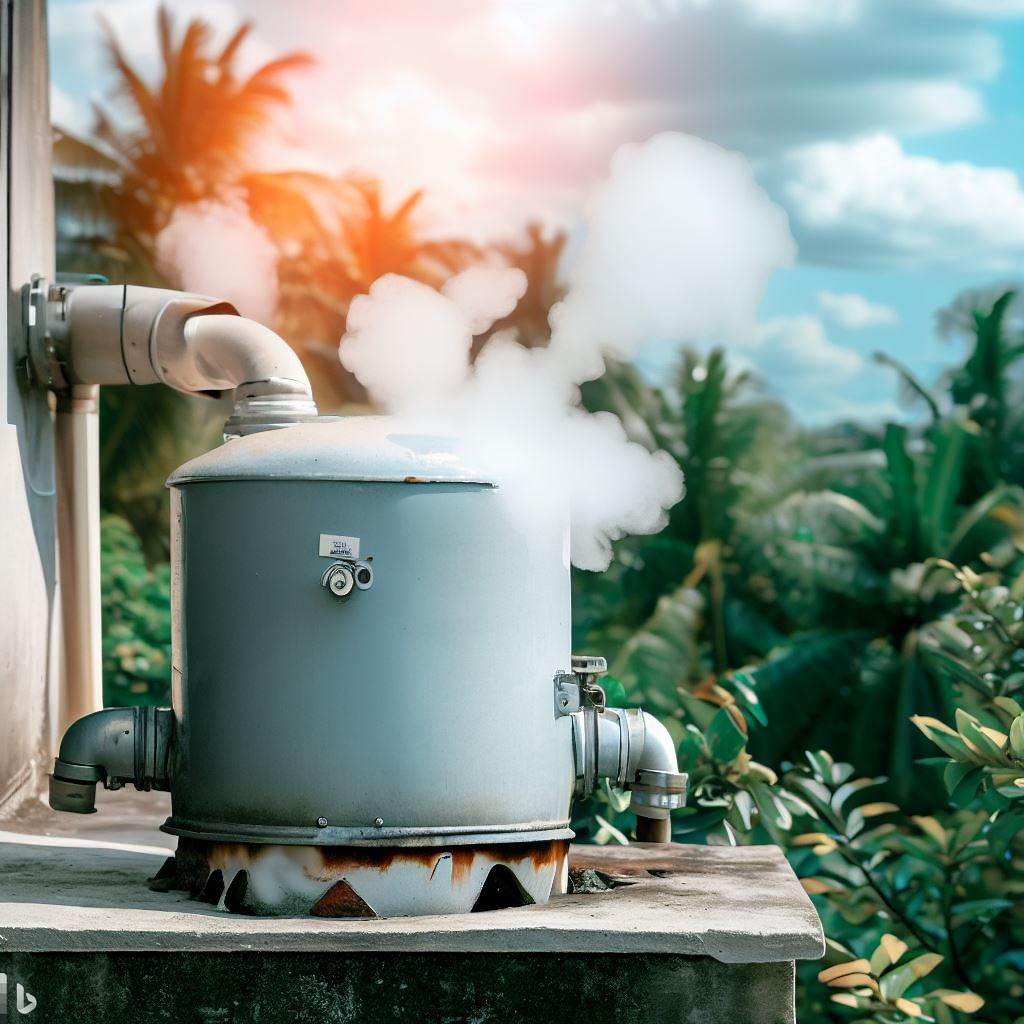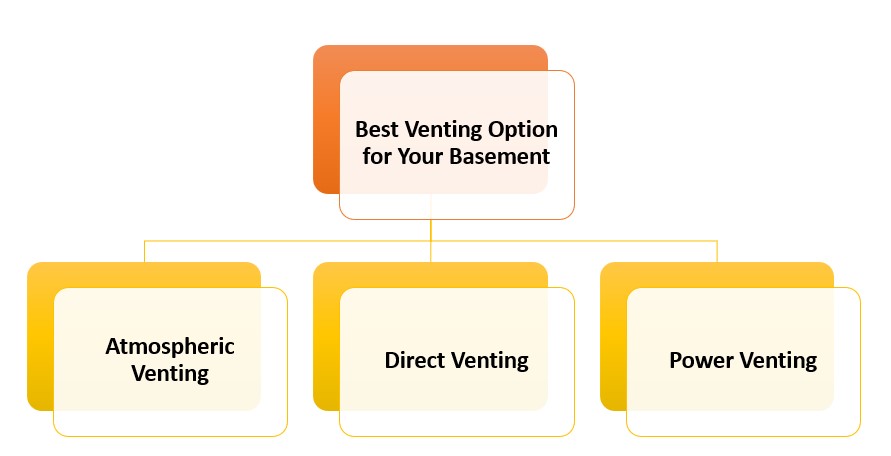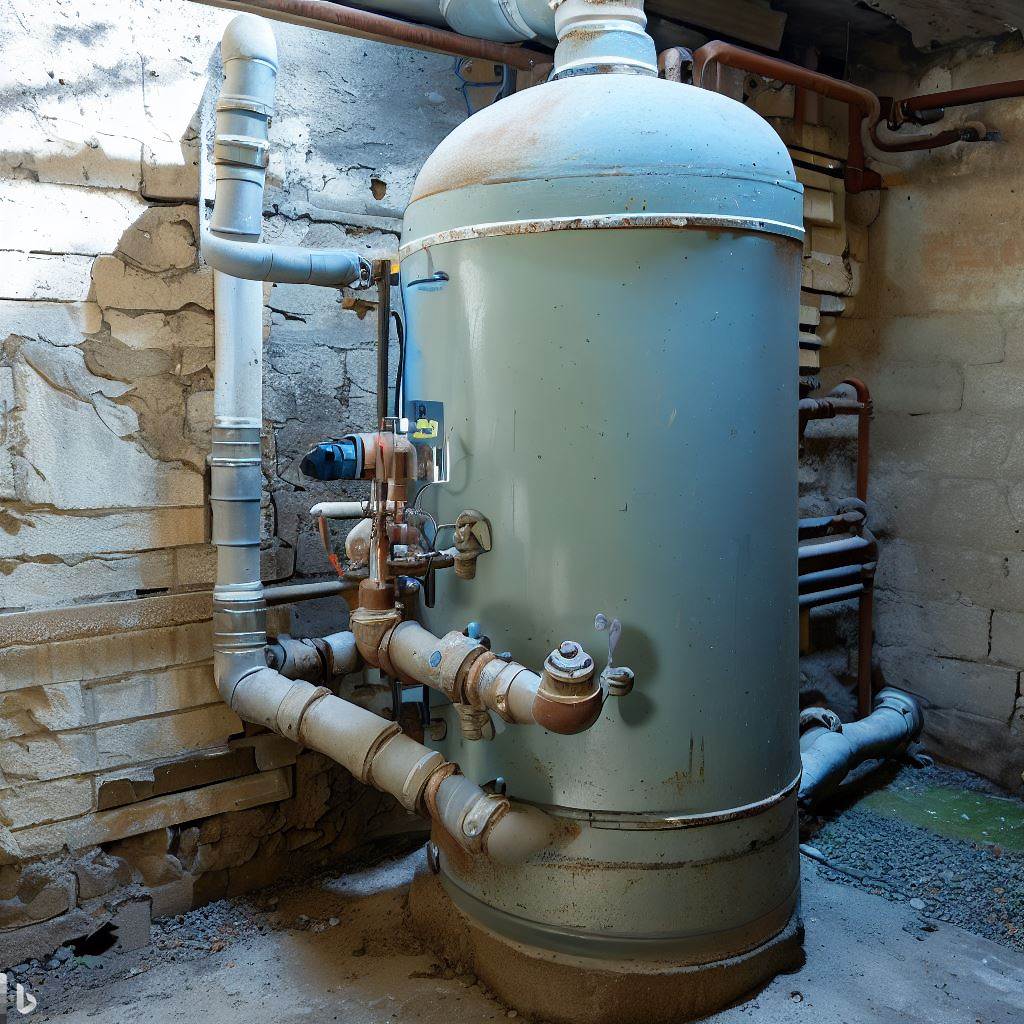Table of Contents
Venting a gas water heater in the basement requires precision. You have two options: thru the wall or house side.
For wall venting, a vertical pipe made of stainless steel or other corrosion-resistant metals is needed. It should extend above roof level.
A direct vent system with both intake and exhaust pipes is used for house side venting. The pipes are concentric and sealed to reduce back drafting risks and improve energy efficiency.
It is important to abide by local building codes and manufacturer’s instructions for a safe installation. Back drafting of exhaust gases can be hazardous, as it can lead to carbon monoxide exposure.
Consulting a professional plumber or HVAC technician is recommended. Improper water heater ventilation can cause combustion hazards and increased energy bills due to heat loss.
Correct installation is key when venting your gas water heater in the basement.
Key Notes
- 1. Venting a gas water heater in the basement is essential for safety reasons. Proper ventilation ensures that any harmful gases, such as carbon monoxide, are safely expelled from the area.
- 2. Before starting the venting process, it is important to check local building codes and regulations. These codes will dictate the specific requirements for venting a gas water heater in your basement.
- 3. The most common type of venting system for gas water heaters is a vertical vent. This involves running a vent pipe vertically through the roof to expel the gases outside. It is important to ensure that the vent pipe is properly sized and installed according to the manufacturer’s instructions.
- 4. Another option for venting a gas water heater in the basement is a direct vent system. This involves using a vent pipe that runs horizontally through an exterior wall. Direct vent systems are often easier to install and can be a good option if vertical venting is not possible.
- 5. It is crucial to regularly inspect and maintain the venting system for your gas water heater. This includes checking for any blockages or damage to the vent pipe, as well as ensuring that the vent cap is securely in place.
- 6. If you are unsure about how to properly vent your gas water heater in the basement, it is recommended to consult a professional plumber or HVAC technician. They will have the expertise and knowledge to ensure that the venting system is installed correctly and meets all safety requirements.
Importance of Proper Ventilation for Gas Water Heaters

Venting a gas water heater in the basement is key for safe and efficient use. Unvented gas can build up and cause serious health risks. It also saves money on energy bills!
Options include: venting through a wall straight outside, or out the side of your house.
It’s important to pick the right system – atmospheric venting or power venting.
To install, check local building codes for single-wall or double-wall vent pipe. Make sure there’s enough clearance and it’s properly supported. Secure any connections with screws or clamps. Seal gaps with silicone caulk or duct tape. Finally, think about a storm collar at the roof penetration point.
Determining the Best Venting Option for Your Basement

Choosing the best venting option for your basement needs careful contemplation of various aspects. These include the type of gas water heater you own, the available space, and local building codes. To aid you in your decision-making, here is a table of the various venting options and their characteristics:
| Venting Option | Description | Pros | Cons |
|---|---|---|---|
| Atmospheric Venting | Uses natural draft to remove combustion gases via a vertical vent pipe. | Easy and affordable installation. | Needs sufficient vertical space and atmospheric conditions for proper drafting. |
| Direct Venting | Requires a committed vent system that brings in outside air for combustion and exhausts gases through a separate pipe. Can be installed horizontally or vertically. | Ensures high efficiency by preventing backdrafting and sustaining correct combustion. Can be installed in small areas. | Requires extra parts for installation. |
| Power Venting | Uses a powered fan to remove combustion gases via a horizontal or vertical vent pipe. Perfect if the spot does not allow for natural draft or direct vent installation. | Offers flexibility in vent pipe routing as it can be extended horizontally or vertically over long distances. | Higher initial cost compared to other options due to needed fan installation. |
Both sealed and unsealed combustion units are commonly used for gas water heaters. Sealed units draw external air right into the unit for combustion, while unsealed units draw air from the surrounding area where they are installed.
- Sealed units give improved efficiency by getting rid of the potential for contaminants entering the unit from the surroundings.
- Maintenance scope is reduced; therefore, fewer issues related to contaminated air filtering inside.
- Unsealed units don’t require such accommodation space but must meet certain ventilation standard. Also needs regular filter replacement.
It’s worth noting that when deciding the best venting option, consulting with a professional plumber or HVAC technician is advised. They can assess your particular situation and offer expert advice to make sure proper and safe installation.
Steps to Venting a Gas Water Heater in a Basement
Venting a gas water heater in a basement is an important task. Careful planning and execution are key for safe and efficient operation. Here’s what you need to do:
- Step 1: Determine the Venting Method. Consider local codes, existing ventilation system, and space available. Options include atmospheric venting (natural draft) and power venting (mechanical assistance like a fan or blower).
- Step 2: Install the Vent Pipe. For atmospheric venting, use a vertical metal pipe from the top of the water heater to the basement ceiling and roof. Follow local codes and manufacturer instructions. For power venting, follow the manufacturer’s guidelines.
- Step 3: Ensure Proper Ventilation. Provide adequate air supply and prevent back drafting. Open windows or install vents if necessary. Check for obstructions or damage to exhaust vents regularly.
Common Mistakes to Avoid When Venting a Gas Water Heater in a Basement

Venting a gas water heater in a basement requires attention. Here’s what to keep in mind:
- Install correctly: Back drafting can occur if done wrong. Use metal or stainless steel pipes and follow the manufacturer’s instructions.
- Point the vent up: Slope the pipe slightly upward to prevent accumulating condensation and corrosion.
- Keep clearances: Follow local codes and keep flammable items away from the water heater and its venting system.
Taking the necessary precautions will provide peace of mind. Wrapping up this guide like a gas water heater vent pipe – now you’re ready to let off some steam (safely) in your basement.
Frequently Asked Questions
How do I vent a gas water heater in the basement?
Venting a gas water heater in the basement requires installing a vent pipe that channels the combustion gases and moisture outside the home. This is typically done by connecting the vent pipe to the top of the water heater and routing it through the basement wall to the outdoors.
How does a gas water heater be vented out the side of the house?
It is possible to vent a gas water heater out the side of the house. This can be done by using specialized venting materials such as concentric venting or direct venting systems. These venting methods allow for safe and efficient exhaust of combustion gases through a side wall.
Does a gas water heater need to be vented?
A gas water heater needs to be vented to ensure proper combustion and safe removal of combustion byproducts. Venting allows for the release of harmful gases, such as carbon monoxide, and helps prevent back drafting, which can lead to indoor air pollution.
Are there different types of venting for gas water heaters?
There are different types of venting for gas water heaters. The two main types are atmospheric venting and power venting. Atmospheric venting uses natural draft to exhaust the combustion gases, while power venting utilizes a fan or blower to force the exhaust gases out.
What materials are commonly used for water heater venting?
Common materials used for water heater venting include metal pipes, such as stainless steel or aluminum, and specialized vent ducts. These materials are chosen for their durability, heat resistance, and compatibility with the specific venting system.
Can a gas water heater be vented through a wall?
A gas water heater can be vented through a wall. This is a common method of venting in basements or other areas where venting through the roof is not practical. However, it is important to follow local codes and manufacturer guidelines to ensure proper installation and safety.
Conclusion
It is important to vent a gas water heater in the basement. This removes harmful exhaust and provides air for combustion. When venting through a wall, use the right pipe and make sure there’s enough draft. Atmospheric venting, with hot air going up, is often used.
In conclusion, it is essential to properly vent a gas water heater in the basement. Doing so protects from emissions and health risks. Follow all installation instructions and consult local regulations.
